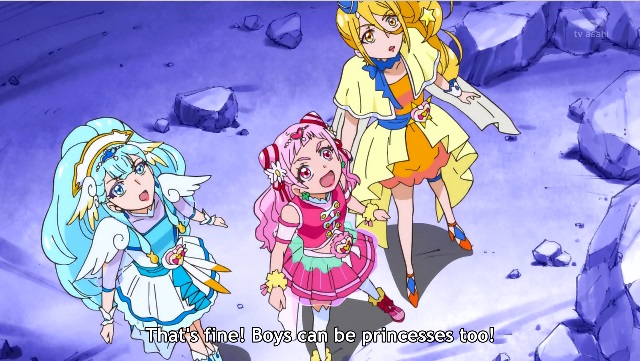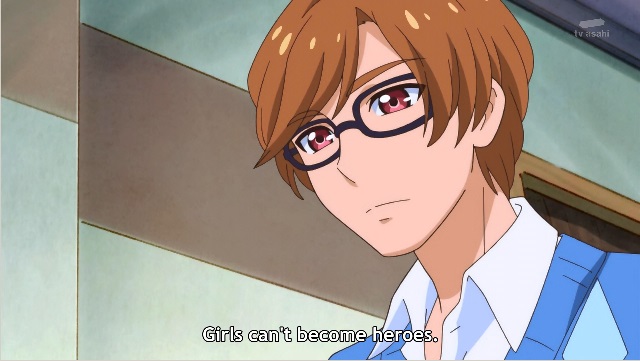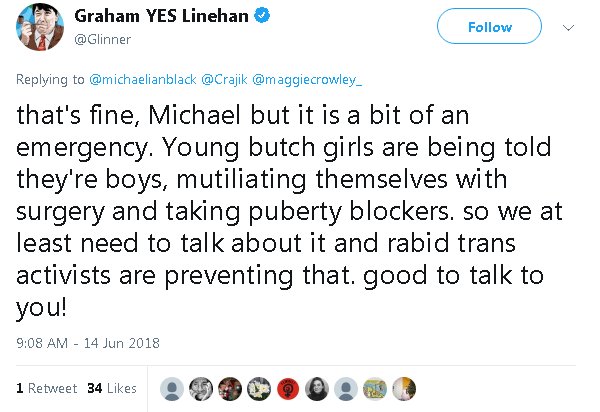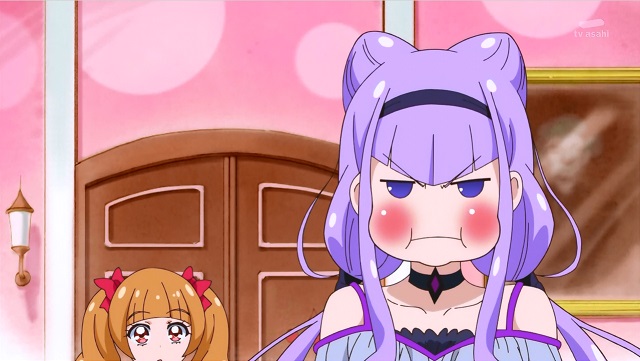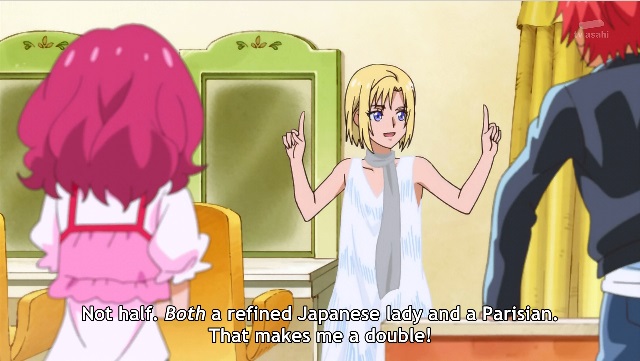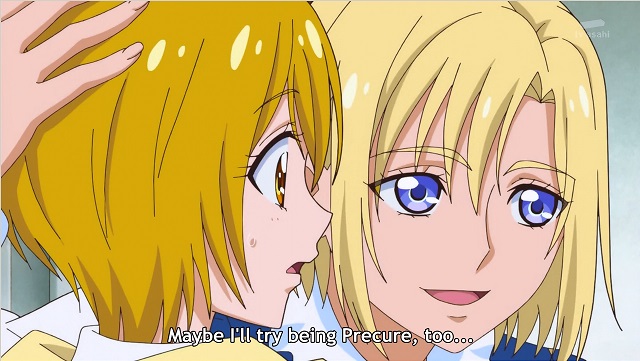Fresh Precure is the Precure series you want to watch if you want a typical Precure experience.. It’s not the best Precure series, but far from the worst and a such exemplifies all the strengths and weaknesses of Precure. There may be some spoilers here.
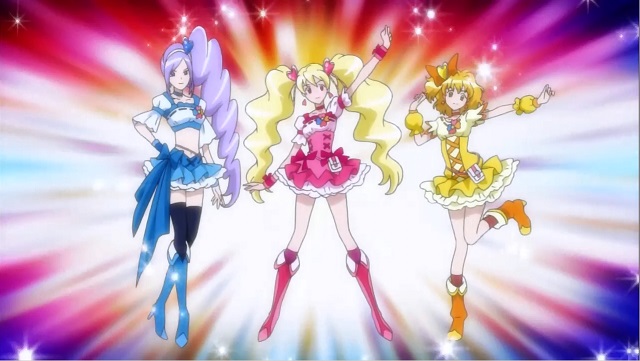
Fresh Precure is the sixth Precure series, originally broadcast in 2009. By this time the overall Precure formula had long since been worked out and the series followed it closely. So it starts with Momozono Love, a bright energetic 14 year old who is always helping others, going to a dance show by her favourite dance team Trinity, only for the show to be attacked by the first of many monsters. Love saves Miyuki, the leader of Trinity and in the process transforms into a Precure, Cure Peach. In the next two episodes she recruits her two best friends. Aono Miki is the cool beauty type who is good at everything, who turns into Cure Berry, while Yamabuki Inori (Buki to friends) is the somewhat shy animal lover who becomes Cure Pine. Both also join for dance lessons with Miyuki. Finally there’s the inevitable cute animal mascot, the ferret like but actually a cute cute fairy, Tarte, with baby fairy Chiffon in tow. The first is here to explain the plot to the girls, the second is more of a deus ex machina/macguffin combo.

The villains are a trio of standard issue Precure punchclock villains: they show up, goof around a bit in their ‘civilian’ identities, switch over, summon a monster and try to harvest sorrow because that’s what they need for their boss’ plans. Wester, Soular and Eas are fun villains, each with their own quirks, though Eas is the most well defined: she actually becomes friends with Love in her secret identity. Their boss is Lord Moebius of the planet Labyrinth, who wants to conquor all the parallel worlds starting with the Earth. Moebius’ evil is fairly abstract: it would be bad if he succeeds in taking over the world, but as long as the Precures continue to defend the status quo, nothing really bad happens.
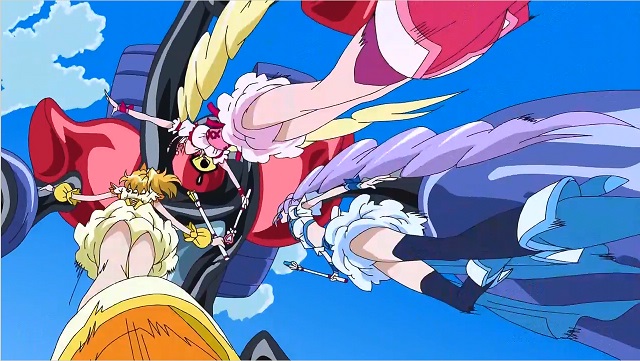
As the series progresses, with the Precures fighting each of Moebius’ lieutenants as they summon the monster of the week, while also having to deal with their own every day problems, both the Precures and the villains power up in a slow arms race, all the way to the mid-season climax. Eas in her civilian identity had steadily become good friends with Love, leaving her conflicted about her duties, but with a new powerup she becomes more determined than ever to crush the Precures, even as her new power is shortening her life everytime she uses it. Ultimately though Love and the other Cures’ dogged persistence breaks through her shell and she does a heel turn, becoming the fourth Precure, Cure Passion.

The next run of episodes sees the series lose some focus, as the remaining two villains are much less of a threat and the emphasis shifts more to the Precure girls’ everyday lives. There’s some obvious filler in there, but there’s also a lot of slow burn character development in there, especially as Eas, now called Setsuna, moves in with Love’s family and adjust to normal life. This is always a weakness of any Precure series, that most of the overall plot happens at the beginning as the Cures and their enemies are introduced, a few episodes in the middle as everybody powers up and one of the villains defects and finally the last couple of episodes, as the story reaches it climax and the evil gets defeated. Keeping the rest of the episodes interesting is always a challenge: the best Precure series do so with a combination of interesting monster of the week episodes and character focus specials. Fresh Precure misses some of that, with Cure Berry and Pine getting much less focus than Cure Peach & Passion.
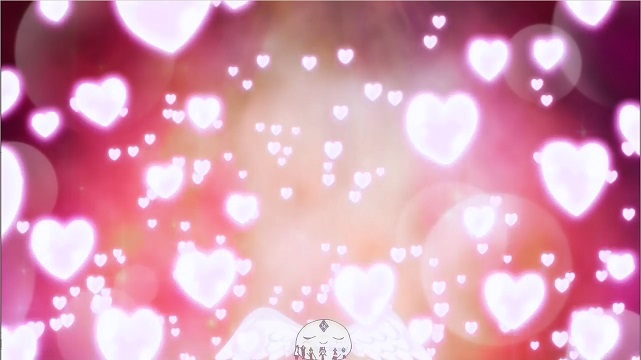
The series picks up again as the final villain, Northa, is introduced, about three quarters of the way through the series. It was only then I realised that they were actual named after compass directions. As per usual, she’s more powerful and also more evil than the other two and her introduction sets in motion the buildup to the final struggle between Moebius and the Precure. Which happens after Chiffon gets captures to function as the capstone to the parallel world invasion machine thingie Moebius built. As world after world falls and Earth itself is attacked, the Precures decide to reveal their secret to their family and friends before they go on their final mission, to save Chiffon. Once they manage to convince their parents to let them go, they invade Labyrinth, set off a revolution, struggle against Wester and Soular until they get their heel turn after Moebius attempts to kill them and the Cures both, defeat Northa and reveal the true identity of Moebius before defeating him with the power of love. Unironically.
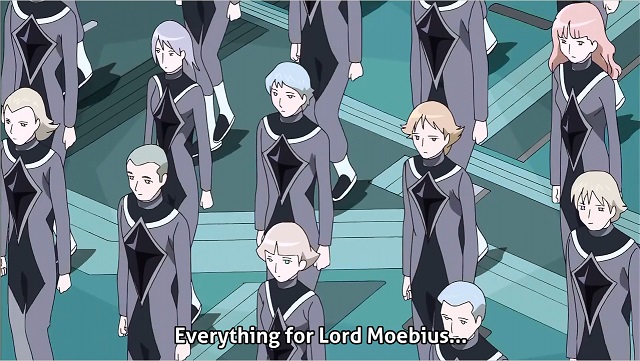
The regimented life on Labyrinth, where nobody has to think for themselves and nobody has to think about others either, just follow orders, living a life without sadness but without joy too, is an old and familiar evil. It’s contrasted by the much more chaotic, much warmer community life of Yotsuba Town. Ultimately the Precures triumph thanks to the support they get from their family, friends, neighbours and even the awakened citizens of Labyrinth. It’s not a contest of individual will, but community versus the lack of it. The people of Labyrinth live a life in which everything is decided for them, which leaves no room for them to help each other. Whereas in Yotsuba Town, people look out for each other, whether friends, family or just casual acquaintances. Throughout the series you get to see small examples of this, which is what makes the finale works. You could arguably fit the actual plot of the series in a one or two cour series of 12-26 episodes, but you can only have that short of slow buildup in a long series like this. Even if those filler episodes add nothing for the plot, they allow the characters to breathe, to grow a bit.
In short, Fresh Precure has all the standard Precure story beats and executes them well. There’s the Precure origin and debut queue, the struggle against the villians in which both sides gradually up their powers, a new Cure joins the team as one villain has her heel turn, real life challenges to be met, the final battle agains the real evil, followed by a happy ever after. It has the standard Precure themes of friendship, family & community overcoming selfishness, but also of few people, no matter how evil, being beyond redemption. Almost all the villains ultimately end up redeemed after all. That’s what I like best about all the Precure series, that feeling of optimism and good will.
